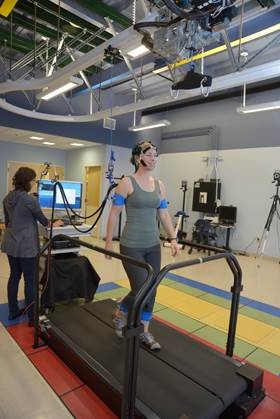You are here
Mobile Brain Imaging and Neurorobotics for Pediatric Neurorehabilitation
Speakers
Abstract
Development and implementation of portable functional neuroimaging technologies, specifically electroencephalography (EEG) and functional near infrared spectroscopy (fNIRS), and robotic devices in Pediatric Neurorehabilitation has increased dramatically in recent years. Functional neuroimaging data using MRI are difficult to obtain in many with cerebral palsy and can only evaluate brain activity during single joint movements whereas many motor tasks (e.g. walking) are possible with EEG and NIRS. However, using these technologies is still daunting. Here we present novel results in CP on a range of functional tasks and recommendations for collection and processing to maximize data quantity and quality.
Despite their proliferation in many clinical settings, robotic devices have failed to demonstrate superiority to existing therapies because they have failed to adhere to known principles of motor learning. Recent devices often have sophisticated control systems that challenge or, perturb users according to biomechanical and motor learning principles and now fully wearable exoskeletons for community use have emerged. I will present the 1st wearable robotic exoskeleton in CP developed in our laboratory with a unique control system, incorporation of FES, and ability to strengthen muscles and train gait patterns over time. The overall objectives of this presentation are to briefly the summarize state of the science in mobile imaging and pediatric robotics and emphasize the need for multidisciplinary teams when developing and implementing these technologies.


